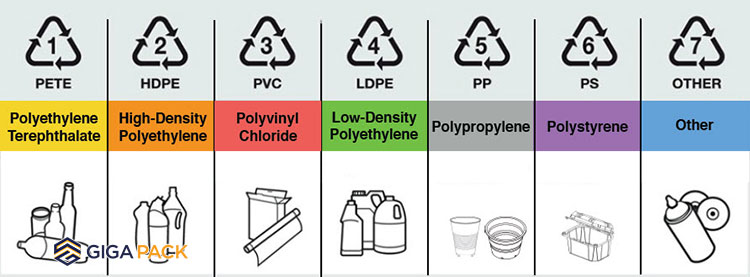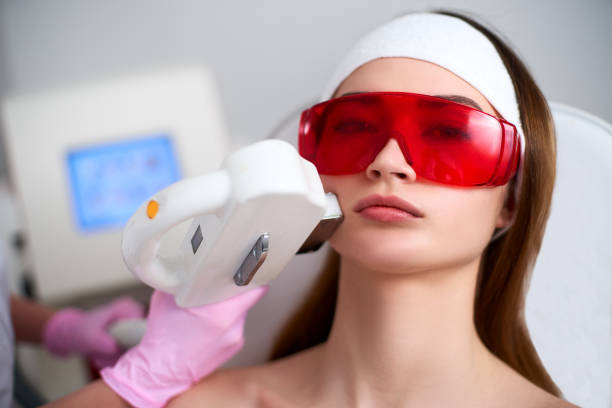Plastic Identification Code and Health Safety Recommendations
Plastic Identification Code and Health Safety Recommendations
Plastic Identification Code – What Does It Mean? The plastic identification code refers to the number assigned to plastic materials on packaging or packaging materials, ranging from 1 to 7, usually found at the bottom of plastic packaging or containers. This code is also known as the recycling number. The purpose of this plastic identification code is to provide guidance to consumers who want to recycle plastic containers.

PLASTIC IDENTIFICATION CODE
Explanation of Plastic Symbols
Number 1 – PETE or PET
Polyethylene terephthalate, also known as PETE or PET, is a thin plastic material made to be semi-rigid or rigid for better impact resistance. This type of plastic is excellent for protecting food or liquids inside packaging.
PETE Applications Used for beverage bottles, carbonated drinks, mineral water bottles, butter tubs, and other common food packaging items. Cooking oil containers, vegetable oil bottles PET Plastic Specifications Can withstand temperatures up to 70°C, suitable only for warm or cold beverages.
Recommendations PET plastic is prone to deformation and becomes harmful when filled with liquid at high temperatures or heated. Additionally, scientists have found that PET plastic may release the carcinogenic substance DEHP after 10 months of use, which can be harmful to the reproductive system. Therefore, discard beverage bottles after use and do not reuse them as water bottles or containers for other items. Do not expose them to sunlight in vehicles; do not store alcohol, oil, and other substances in them.
Number 2 – HDPE
HDPE stands for High-Density Polyethylene, a hard, opaque plastic that is thin but durable. This plastic is recyclable.
HDPE Applications Medicine bottles, yogurt cups, chewing gum boxes, detergents, shampoos, body washes, cooking oil, insecticides, tui hdpe, etc. Containers are usually translucent and have a waxy feel.
Recommendations Do not recycle if not properly cleaned. It can be reused after thorough cleaning, but these containers are often difficult to clean. The original contaminants may persist and become breeding grounds for bacteria. Avoid reusing them.
Number 3 – PVC
Polyvinyl chloride, also known as PVC, is a common plastic with biocidal and chemical resistance properties. With these characteristics, PVC plastic containers are an excellent choice for maintaining the integrity of the product inside.
PVC Applications Used in water pipes and pipe fittings, raincoats, construction materials, plastic boxes.
PVC Plastic Specifications Excellent flexibility and low cost. Widely used and can only be heated up to 81°C.
Recommendations This is a plastic to avoid. Rarely used for food packaging today. If food containers are made of PVC, it’s best not to purchase them.
This material can produce harmful substances at high temperatures, and even a small amount released during production is rarely used in food packaging. When these toxic substances enter the human body with food, they can cause diseases such as breast cancer and congenital defects in infants.
Number 4 – LDPE
LDPE stands for Low-Density Polyethylene, thinner and more flexible at high temperatures.
LDPE Applications Used in stretch wrap applications, nylon bags, food wrapping films, toothpaste or facial cleanser tube packaging. Not suitable for beverage containers.
Recommendations LDPE’s heat resistance is not strong. Generally, food wrap films will melt when temperatures exceed 110°C, leaving some plastic residues that the human body cannot decompose. Additionally, when food is wrapped in food wrap and heated, the fats in the food can easily dissolve harmful substances in the food wrap. If these toxic substances enter the human body with food, they can cause diseases such as breast cancer and congenital defects in infants. Therefore, it should not be heated with food in the microwave.
Number 5 – PP – Polypropylene
Polypropylene, also known as PP, can be opaque and translucent. Because it can withstand high temperatures, it can be used for food packaging products used in microwaves. PP is recyclable.
PP Applications Water buckets, trash cans, baskets, shelves, microwave food containers, and other food containers. Yogurt containers Fruit juice bottles Prescription medicine bottles Nylon bags PP (túi pp chịu nhiệt) Plastic Specifications Can withstand high temperatures from 130°C to 170°C. This is the only plastic container that can be put in the microwave and reused after thorough cleaning.
Recommendations Special attention should be paid to some lunch boxes used in microwaves. Although the lunch box is made of PP No. 5, the lid is made of another plastic that cannot withstand high temperatures, so it cannot be put in the microwave with the lunch box. To ensure safety, remove the lunch box lid before putting it in the microwave.
Number 6 – PS
Polystyrene, or PS, is a hard, colorless plastic with limited flexibility. This plastic can be formed into foam or molded. It can also be recycled.
PS Applications Construction materials, toys, office supplies, rollers, ice bins, instant noodle cups, instant noodle boxes, disposable utensils, etc. Fast food boxes, egg boxes Plastic pressing
PS Plastic Specifications Water absorption, low heat and cold resistance.
Recommendations Cannot be placed in the microwave to avoid chemical release due to high temperatures. And it should not be used to hold strong acids (such as orange juice), strong alkalis, as it will decompose polystyrene, which is not good for the human body, and can cause cancer. Therefore, you should try to avoid using PS fast food boxes for packaging hot food. Do not use the microwave to cook instant noodles in a bowl.
Number 7 – OTHER or O
When you see a ‘different symbol or number 7 symbol’ in food packaging, it means it is made of a different type of plastic than the six listed above. For example, food packaging can be made of polycarbonate or polylactide bioplastic or more than one type of plastic. This type of plastic can be recycled.
O Applications PC: water bottles, water cups, space cups, children’s milk bottles, coffee box lids, etc.
PA: Nylon, mainly used for internal parts of fabric fibers and some household appliances.
Recommendations PC releases the toxic substance bisphenol A at high temperatures, harmful to the human body. Do not heat during use, do not expose directly to sunlight.
Remember that plastic products numbered 5 are recognized as the safest for health as food containers, and this is also the only type of plastic container that can be heated in a microwave.










